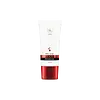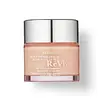What's inside
What's inside
 Key Ingredients
Key Ingredients

 Benefits
Benefits

 Concerns
Concerns

 Ingredients Side-by-side
Ingredients Side-by-side

Water
Skin ConditioningEthylhexyl Palmitate
EmollientButylene Glycol
HumectantPentylene Glycol
Skin ConditioningCetearyl Alcohol
EmollientPropanediol
SolventDimethicone
EmollientSodium PCA
HumectantStearic Acid
CleansingAluminum Starch Octenylsuccinate
AbsorbentCetyl Alcohol
EmollientPersea Gratissima Oil
Skin ConditioningGlyceryl Stearate
EmollientPEG-100 Stearate
Phenoxyethanol
PreservativeCeteareth-20
CleansingHdi/Trimethylol Hexyllactone Crosspolymer
Parfum
MaskingCarbomer
Emulsion StabilisingEthylhexylglycerin
Skin ConditioningTocopheryl Acetate
AntioxidantSnail Secretion Filtrate
Skin ConditioningSodium Hydroxide
BufferingGlyceryl Linoleate
EmollientBHT
AntioxidantDisodium EDTA
Sodium Lauroyl Lactylate
EmulsifyingTriethylene Glycol
MaskingGlyceryl Oleate
EmollientGlyceryl Palmitate
EmollientSodium Hyaluronate
HumectantEthyl Hexanediol
SolventGlyceryl Linolenate
EmollientCeramide NP
Skin ConditioningHydrolyzed Hyaluronic Acid
HumectantSilica
AbrasiveCeramide AP
Skin ConditioningPhytosphingosine
Skin ConditioningCholesterol
EmollientXanthan Gum
EmulsifyingTocopherol
AntioxidantGlycine Soja Oil
EmollientCeramide EOP
Skin ConditioningWater, Ethylhexyl Palmitate, Butylene Glycol, Pentylene Glycol, Cetearyl Alcohol, Propanediol, Dimethicone, Sodium PCA, Stearic Acid, Aluminum Starch Octenylsuccinate, Cetyl Alcohol, Persea Gratissima Oil, Glyceryl Stearate, PEG-100 Stearate, Phenoxyethanol, Ceteareth-20, Hdi/Trimethylol Hexyllactone Crosspolymer, Parfum, Carbomer, Ethylhexylglycerin, Tocopheryl Acetate, Snail Secretion Filtrate, Sodium Hydroxide, Glyceryl Linoleate, BHT, Disodium EDTA, Sodium Lauroyl Lactylate, Triethylene Glycol, Glyceryl Oleate, Glyceryl Palmitate, Sodium Hyaluronate, Ethyl Hexanediol, Glyceryl Linolenate, Ceramide NP, Hydrolyzed Hyaluronic Acid, Silica, Ceramide AP, Phytosphingosine, Cholesterol, Xanthan Gum, Tocopherol, Glycine Soja Oil, Ceramide EOP
Water
Skin ConditioningHelianthus Annuus Seed Oil
EmollientButylene Glycol
HumectantSqualane
EmollientCetearyl Alcohol
EmollientHydrolyzed Wheat Protein
Skin ConditioningHordeum Distichon Extract
Skin ProtectingArnica Montana Flower Extract
MaskingMethylsilanol Hydroxyproline Aspartate
Skin ConditioningHydrolyzed Soy Flour
Skin ConditioningGlycolipids
Skin ConditioningSodium Hyaluronate
HumectantTocopheryl Acetate
AntioxidantDimethicone
EmollientBisabolol
MaskingAllantoin
Skin ConditioningAloe Barbadensis Leaf Juice
Skin ConditioningSodium PCA
HumectantPPG-2 Myristyl Ether Propionate
EmollientIsocetyl Stearate
EmollientSorbitan Stearate
EmulsifyingCetyl Phosphate
EmulsifyingPolysorbate 60
EmulsifyingCarbomer
Emulsion StabilisingMagnesium Aluminum Silicate
AbsorbentDisodium EDTA
Triethanolamine
BufferingPhenoxyethanol
PreservativeMethylparaben
PreservativePropylparaben
PreservativeGeraniol
PerfumingCitronellol
PerfumingParfum
MaskingCI 17200
Cosmetic ColorantWater, Helianthus Annuus Seed Oil, Butylene Glycol, Squalane, Cetearyl Alcohol, Hydrolyzed Wheat Protein, Hordeum Distichon Extract, Arnica Montana Flower Extract, Methylsilanol Hydroxyproline Aspartate, Hydrolyzed Soy Flour, Glycolipids, Sodium Hyaluronate, Tocopheryl Acetate, Dimethicone, Bisabolol, Allantoin, Aloe Barbadensis Leaf Juice, Sodium PCA, PPG-2 Myristyl Ether Propionate, Isocetyl Stearate, Sorbitan Stearate, Cetyl Phosphate, Polysorbate 60, Carbomer, Magnesium Aluminum Silicate, Disodium EDTA, Triethanolamine, Phenoxyethanol, Methylparaben, Propylparaben, Geraniol, Citronellol, Parfum, CI 17200
Ingredients Explained
These ingredients are found in both products.
Ingredients higher up in an ingredient list are typically present in a larger amount.
Butylene Glycol (or BG) is used within cosmetic products for a few different reasons:
Overall, Butylene Glycol is a safe and well-rounded ingredient that works well with other ingredients.
Though this ingredient works well with most skin types, some people with sensitive skin may experience a reaction such as allergic rashes, closed comedones, or itchiness.
Learn more about Butylene GlycolCarbomer is a polymer of acrylic acid. Its main role is to create a gel consistency.
A high amount of carbomer can cause pilling or balling up of products. Don't worry, most products contain 1% or less of carbomer.
Cetearyl alcohol is a mixture of two fatty alcohols: cetyl alcohol and stearyl alcohol. It is mainly used as an emulsifier. Emulsifiers help prevent the separation of oils and products. Due to its composition, it can also be used to thicken a product or help create foam.
Cetearyl alcohol is an emollient. Emollients help soothe and hydrate the skin by trapping moisture.
Studies show Cetearyl alcohol is non-toxic and non-irritating. The FDA allows products labeled "alcohol-free" to have fatty alcohols.
This ingredient is usually derived from plant oils such as palm, vegetable, or coconut oils. There is debate on whether this ingredient will cause acne.
Due to the fatty acid base, this ingredient may not be Malassezia folliculitis safe.
Learn more about Cetearyl AlcoholDimethicone is a type of synthetic silicone created from natural materials such as quartz.
What it does:
Dimethicone comes in different viscosities:
Depending on the viscosity, dimethicone has different properties.
Ingredients lists don't always show which type is used, so we recommend reaching out to the brand if you have questions about the viscosity.
This ingredient is unlikely to cause irritation because it does not get absorbed into skin. However, people with silicone allergies should be careful about using this ingredient.
Note: Dimethicone may contribute to pilling. This is because it is not oil or water soluble, so pilling may occur when layered with products. When mixed with heavy oils in a formula, the outcome is also quite greasy.
Learn more about DimethiconeDisodium EDTA plays a role in making products more stable by aiding other preservatives.
It is a chelating agent, meaning it neutralizes metal ions that may be found in a product.
Disodium EDTA is a salt of edetic acid and is found to be safe in cosmetic ingredients.
Learn more about Disodium EDTAParfum is a catch-all term for an ingredient or more that is used to give a scent to products.
Also called "fragrance", this ingredient can be a blend of hundreds of chemicals or plant oils. This means every product with "fragrance" or "parfum" in the ingredients list is a different mixture.
For instance, Habanolide is a proprietary trade name for a specific aroma chemical. When used as a fragrance ingredient in cosmetics, most aroma chemicals fall under the broad labeling category of “FRAGRANCE” or “PARFUM” according to EU and US regulations.
The term 'parfum' or 'fragrance' is not regulated in many countries. In many cases, it is up to the brand to define this term.
For instance, many brands choose to label themselves as "fragrance-free" because they are not using synthetic fragrances. However, their products may still contain ingredients such as essential oils that are considered a fragrance by INCI standards.
One example is Calendula flower extract. Calendula is an essential oil that still imparts a scent or 'fragrance'.
Depending on the blend, the ingredients in the mixture can cause allergies and sensitivities on the skin. Some ingredients that are known EU allergens include linalool and citronellol.
Parfum can also be used to mask or cover an unpleasant scent.
The bottom line is: not all fragrances/parfum/ingredients are created equally. If you are worried about fragrances, we recommend taking a closer look at an ingredient. And of course, we always recommend speaking with a professional.
Learn more about ParfumPhenoxyethanol is a preservative that has germicide, antimicrobial, and aromatic properties. Studies show that phenoxyethanol can prevent microbial growth. By itself, it has a scent that is similar to that of a rose.
It's often used in formulations along with Caprylyl Glycol to preserve the shelf life of products.
Sodium Hyaluronate is hyaluronic acid's salt form. It is commonly derived from the sodium salt of hyaluronic acid.
Like hyaluronic acid, it is great at holding water and acts as a humectant. This makes it a great skin hydrating ingredient.
Sodium Hyaluronate is naturally occurring in our bodies and is mostly found in eye fluid and joints.
These are some other common types of Hyaluronic Acid:
Learn more about Sodium HyaluronateSodium PCA is the sodium salt of pyroglutamic acid. It is naturally occurring in our skin's natural moisturizing factors where it works to maintain hydration.
The PCA stands for pyrrolidone carboxylic acid, a natural amino acid derivative.
This ingredient has skin conditioning, anti-inflammatory, and humectant properties. Humectants help hydrate your skin by drawing moisture from the air. This helps keep your skin moisturized.
Learn more about Sodium PCATocopheryl Acetate is AKA Vitamin E. It is an antioxidant and protects your skin from free radicals. Free radicals damage the skin by breaking down collagen.
One study found using Tocopheryl Acetate with Vitamin C decreased the number of sunburned cells.
Tocopheryl Acetate is commonly found in both skincare and dietary supplements.
Learn more about Tocopheryl AcetateWater. It's the most common cosmetic ingredient of all. You'll usually see it at the top of ingredient lists, meaning that it makes up the largest part of the product.
So why is it so popular? Water most often acts as a solvent - this means that it helps dissolve other ingredients into the formulation.
You'll also recognize water as that liquid we all need to stay alive. If you see this, drink a glass of water. Stay hydrated!
Learn more about Water